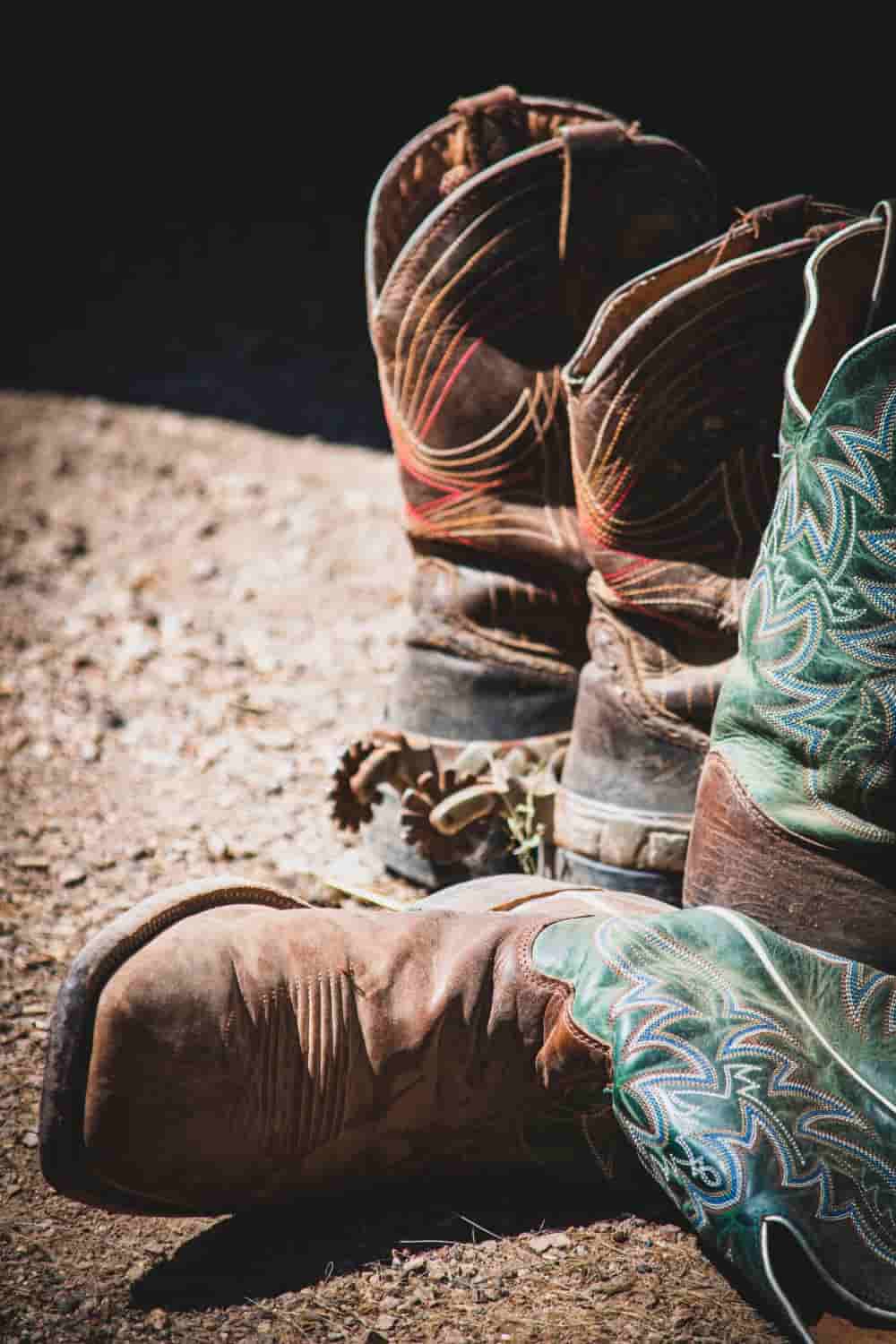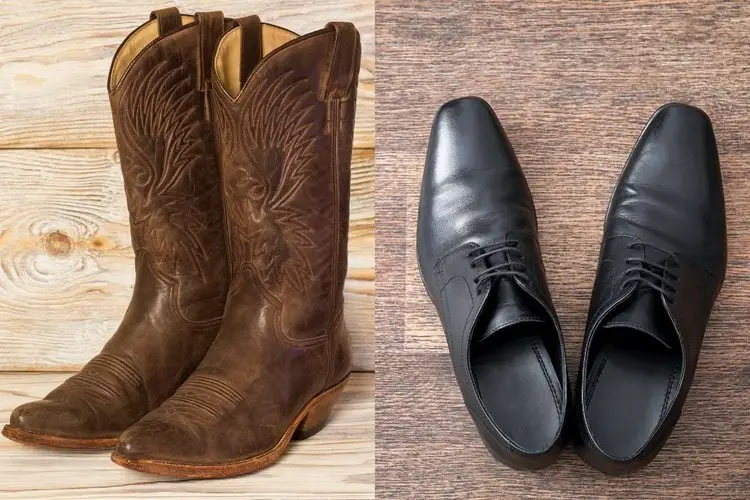
Cowboy Boots vs. Work Boots: Which Western Footwear is Right for You?
The American West. A land of rugged individualism, sprawling landscapes, and… boots. But when it comes to choosing the right footwear for your Western adventures (or everyday life), the decision can be surprisingly complex. Cowboy boots and work boots, while sharing a common heritage, cater to distinctly different needs and aesthetics. This in-depth comparison will help you navigate the dusty trails of footwear choices and find the perfect pair for your feet.
Beyond the Leather: Understanding the Differences
The most obvious distinction lies in their intended purpose. Cowboy boots, steeped in history and tradition, are a statement piece. Their elegant silhouettes, often adorned with intricate stitching and bold designs, speak volumes about heritage and style. Work boots, on the other hand, are built for functionality. Durability, safety, and comfort during long hours of labor are their primary concerns.
A Tale of Two Toes:
One key difference lies in the toe shape. Cowboy boots famously feature a pointed or slightly rounded toe, a design that’s both aesthetically pleasing and historically significant (think of the ease of using a stirrup). Work boots, however, tend to sport a more practical, square or rounded toe, offering better protection and stability on the job.
The Heel’s the Deal:
The heel height also reveals a significant distinction. Cowboy boots boast a characteristically higher, sculpted heel, contributing to their distinctive profile and aiding in riding. Work boots, while sometimes featuring a slight heel, prioritize flat or low-profile heels for stability and safety on uneven terrain.
Construction and Materials: A Head-to-Head
While both styles often employ durable leather, the type and construction differ significantly. Cowboy boots often utilize high-quality, supple leathers, sometimes featuring exotic skins. Work boots lean towards tougher, more resistant materials, frequently incorporating steel toes, puncture-resistant soles, and reinforced stitching for enhanced protection.
The Comfort Factor: Saddle Up or Get to Work?
Comfort is paramount, regardless of the boot type. However, the priorities differ. Cowboy boots, while undeniably stylish, might not provide the same level of all-day comfort as a well-fitted work boot designed for prolonged wear. Work boots prioritize comfort features such as cushioned insoles and breathable linings, optimizing comfort for hours on the job.
Style and Versatility: A Wild West Showdown
Cowboy boots, with their timeless appeal, effortlessly transition from casual outings to special events. Their versatility allows them to be paired with jeans, dresses, or even skirts, offering a touch of Western flair to any ensemble. Work boots, while undeniably rugged, are gaining ground in the fashion world, becoming popular in casual settings, especially with workwear-inspired styles.
Choosing Your Champion:
Ultimately, the best choice depends entirely on your individual needs and priorities. Consider the following:
| Feature | Cowboy Boots | Work Boots |
|---|---|---|
| Primary Use | Fashion, occasional wear | Work, heavy-duty tasks |
| Toe Shape | Pointed or slightly rounded | Square, rounded, or steel toe |
| Heel Height | High, sculpted | Low or flat |
| Material | High-quality leather | Durable leather, steel toes etc. |
| Comfort | Stylish, may lack all-day comfort | Designed for prolonged wear |
| Versatility | High, fashionable | Increasing, workwear-inspired |
Beyond the Basics:
This comparison only scratches the surface. Factors like shaft height, stitching details, sole material, and overall craftsmanship further differentiate these iconic footwear styles. Don’t hesitate to explore the many variations available before making your decision. Researching different brands, reading reviews, and trying on multiple pairs will ensure you find the perfect fit and style that embodies your personal Western spirit.

Additional Information
Cowboy Boots vs. Work Boots: A Deeper Dive into Western Footwear Selection
The choice between cowboy boots and work boots hinges on a careful consideration of several factors beyond mere aesthetics. While both originate from the Western tradition and share some design similarities, their intended purposes, construction, and resulting performance characteristics diverge significantly. This analysis delves deeper into these differences to assist in informed decision-making.
I. Beyond the Leather: Construction and Material Analysis:
-
Cowboy Boots: Primarily focused on style and comfort for extended periods of (often less physically demanding) wear. Construction typically involves:
- Higher-quality leather: Often full-grain or high-grade corrected grain leathers are used, emphasizing durability and a polished appearance. Exotic leathers (alligator, ostrich) are common in higher-end models.
- Emphasis on aesthetics: Elaborate stitching, intricate tooling, and decorative elements are frequent features. This can impact durability in demanding environments.
- Lighter construction: While durable, cowboy boots prioritize comfort and flexibility over extreme ruggedness. Soles may be leather or a composite material designed for walking on varied surfaces, but not necessarily heavy-duty applications.
- Example: A Lucchese boot emphasizes handcrafted details and high-quality leather for comfort and style, prioritizing appearance over extreme work capacity.
-
Work Boots: Engineered for protection and durability in demanding work environments. Construction characteristics include:
- Robust materials: Typically utilize durable leathers (often full-grain) or synthetic materials (such as nylon or composite textiles) chosen for abrasion resistance and water-repellency. Steel toes are common, along with puncture-resistant midsoles.
- Safety features: Meet stringent safety standards (e.g., ASTM standards for electrical hazard protection, metatarsal guards).
- Heavy-duty construction: Reinforced stitching, thicker soles (often with slip-resistant treads), and robust construction are designed to withstand significant wear and tear.
- Example: A Timberland PRO boot prioritizes safety features like steel toes and electrical hazard protection, sacrificing some aesthetic appeal for increased protection and durability.
II. Performance in Different Contexts:
The suitability of each boot type significantly varies depending on the intended use:
-
Ranching/Agriculture: While traditionally associated with cowboys, the demands of modern ranching often necessitate work boots. The strenuous physical labor, potential for sharp objects, and exposure to the elements necessitate greater protection and durability than a typical cowboy boot can offer. A hybrid approach, combining cowboy boot styling with work boot construction, might be a viable solution for some ranchers.
-
Construction/Trades: Work boots are unequivocally the superior choice. The hazards present in construction, manufacturing, or other trades – falling objects, sharp materials, uneven terrain – demand the safety and protection that work boots provide.
-
Social/Fashion: Cowboy boots excel in this arena. Their aesthetic appeal, comfortable (though less protective) design, and cultural significance make them a stylish choice for casual or semi-formal occasions. Work boots, while increasingly accepted in some fashion circles, generally lack the stylistic versatility of cowboy boots.
III. Cost Considerations:
Prices can vary significantly, with higher-quality cowboy boots often exceeding the cost of comparable work boots. This is due to the greater emphasis on materials, craftsmanship, and aesthetic details in cowboy boot production. However, work boots with specialized safety features (steel toes, electrical hazard protection) can also reach a high price point.
IV. Conclusion:
The “right” Western footwear depends entirely on the intended use. For those seeking style, comfort for moderate activity, and a connection to Western heritage, cowboy boots are ideal. Individuals working in physically demanding or hazardous environments require the superior protection and durability offered by work boots. Careful consideration of the work environment, safety requirements, and desired level of comfort is crucial in making an informed decision. A pragmatic approach might involve owning both types of boots, adapting footwear to the demands of each situation. Analyzing the needs of the specific application, be it a construction site or a rodeo, is paramount to selecting the appropriate footwear.

